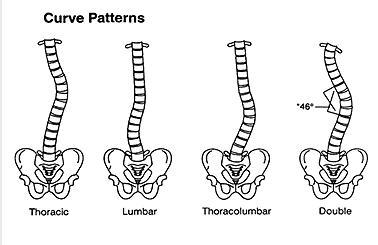 A reader left the following question as a comment on Nina’s post Side Plank Pose Could Reduce Spinal Curves in People with Scoliosis, which described a study in which Side Plank pose was practiced to help improve scoliosis:
A reader left the following question as a comment on Nina’s post Side Plank Pose Could Reduce Spinal Curves in People with Scoliosis, which described a study in which Side Plank pose was practiced to help improve scoliosis:Q: I'm wondering if the pose should be done on only one side to correct the imbalance. If so, advise on how to determine which side would be useful to me.
A: The yoga world is all a buzz about the newest study for Loren Fishman, MD on yoga for scoliosis. Dr. Fishman, an Iyengar yoga practitioner, physiatrist, and yoga researcher, has just completed at study looking at the effect of one pose, Side Plank (Vasithansana), on scoliosis. (By the way, Fishman has already written two books on yoga, one on yoga for arthritis and one on yoga for osteoporosis, and is also conducting a large study on yoga for osteoporosis.)For those interested, you can see the study itself at www.gahmj.com. I tend to like to look at the whole thing, as reports about the study are often incomplete in painting a good picture of what was done! Note: when I first visited this site, I could view the entire study, but now only the abstract appears. If you have information on how to access the full study, please let us know and we'll revise this post.In the study, Fishman’s team noted a particular trend in the modern treatment of scoliosis that often involves muscular stretching and relaxation to address the sometimes painful curvature of scoliosis.“Non-surgical techniques for treating scoliosis frequently focus on realigning the spine, typically by muscular relaxation or muscular or ligamentous stretching. However, such treatments, which include physical therapeutic, chiropractic, and bracing techniques, are inconsistently supported by current evidence.” (Emphasis is mine.)They therefore choose an opposite approach, utilizing a single pose to strengthen the side of the chest and spine the scoliosis curves toward (or bows toward). The majority of scoliosis cases curve towards the right side in the thoracic or rib cage part of the spine. There are other less common varieties, but I’d like to use this one as the example. Of the 25 subjects enrolled in the study, 19 did a good enough job following the study’s recommendation to be included for the final results: once a day practice Side Plank pose, initially for 10-20 seconds for the first week, then increasing the hold for as long as they could after that, most days of the week. With the curve to the right side, they would only do Side Plank with the right hand on the floor. They also were taught to do a important variation of Side Plank that may be different than the alignment often taught in public classes, with the hips and side body bowed up a bit towards the sky instead of keeping the two sides of the torso parallel.X-rays were taken at the start of the study and again between 3-22months later. The average time practitioners held the pose was 1.5 minutes, and the frequency was six out of seven days a week for a bit over six months. Again, the practitioners did this one pose, once a day only, on the one side. The change in the curve of the spine was impressive: in the compliant group, the mean change in the angle of curve (known as the Cobb angle) was over 40%. This is quite a lot! But there is also a lot we don’t know:
- If the participants suffered chronic pain from their scoliosis and if their pain improved at the end of the study.
- If the participants had trouble with secondary issues in doing the same pose over and over for six months, such as wrist, elbow or shoulder soreness or pain, even though the authors stated somewhere that these were not an issue.
- While the study included a few different variations of the pose, such as forearm version vs. full version, it was not clear how many participants required modifications to participate.
- Whether the improvements in the curve would remain if the participants stopped doing the pose after six months and were six months after stopping practice, for instance. Do they have to do this indefinitely to keep the straighter spine?
- Doing the convex side of Side Plank pose first with the hip/side body arch as in the study.
- Then doing the Pose on other side, but without the lift, focusing on keeping the two sides of the chest as parallel as possible.
- Then repeating the first side again with the study lift variation.
—BaxterSubscribe to YOGA FOR HEALTHY AGING by Email ° Follow Yoga for Healthy Aging on Facebook

